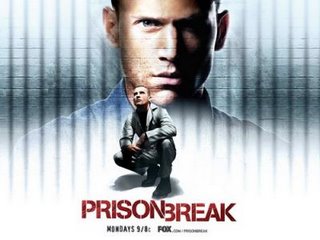Ethnic stereotypes in American Media
http://en.wikipedia.org/wiki/Media_and_ethnicity
Africans/Blacks
Main article: Stereotypes of Africans/Blacks
African Americans as a group have primarily been stereotyped as animalistic brutes in American culture: physically rather than intellectually oriented, hedonistic, criminal-minded, violent, and willing to rape. They are more likely to be portrayed as unrestrained, hot-tempered, and profane (inclined toward use of profanity) than Whites or others in movies and television shows.
African Americans are generally portrayed as intellectually, economically, and culturally inadequate, and soliciting or in constant need of assistance from Whites and others. The stereotype of the dedicated non-African American teacher, social worker, or mentor providing what African American family, culture, and buying power cannot is well established in films, tv shows, and televised charity appeals.
Prison Break often conforms to these stereotypes but does subverts them as well. Although there are black inmates in the Prison for committing crimes (thus conforming to their steotypes) the fact that there are white men in there who have done exactly the same, if not worse, shows that white men are taking over the black stereotype of being 'animalistic brutes' and 'criminal minded' in the American Media through Prison Break.
http://en.wikipedia.org/wiki/Media_and_ethnicity
Africans/Blacks
Main article: Stereotypes of Africans/Blacks
African Americans as a group have primarily been stereotyped as animalistic brutes in American culture: physically rather than intellectually oriented, hedonistic, criminal-minded, violent, and willing to rape. They are more likely to be portrayed as unrestrained, hot-tempered, and profane (inclined toward use of profanity) than Whites or others in movies and television shows.
African Americans are generally portrayed as intellectually, economically, and culturally inadequate, and soliciting or in constant need of assistance from Whites and others. The stereotype of the dedicated non-African American teacher, social worker, or mentor providing what African American family, culture, and buying power cannot is well established in films, tv shows, and televised charity appeals.
Prison Break often conforms to these stereotypes but does subverts them as well. Although there are black inmates in the Prison for committing crimes (thus conforming to their steotypes) the fact that there are white men in there who have done exactly the same, if not worse, shows that white men are taking over the black stereotype of being 'animalistic brutes' and 'criminal minded' in the American Media through Prison Break.

